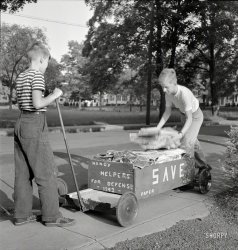
MAY CONTAIN NUTS

Search Shorpy
SHORPY ART

Framed or unframed, desk size to sofa size, printed by us in Arizona and Alabama since 2007. Explore now.
Join and Share
Ad-Free Shorpy
Shorpy is funded by you. Patreon contributors get an ad-free experience.
Learn more.

Recent comments
- +112
- Rear View
- Way in the back --
- Button It Up
- And with an eye on the time ...
- Working in an enclosed ashtray
- Rear View Mirror?
- Tobacco cam
- Basic fact I learned only later in life
- Put a Lid on it!
- Pinstripes in the Tower
- Sound enhancement
- 3438 in '38
- Second Career
- Their days are numbered
- Only the Sensor
- Train control mechanism
- Rarest of the Rare?? & Classy 3400 Class
- Control Mechanism
- Those standpipes
- Wrenches
- International D-40 I believe
- Job prospects
- You had me at Train
- Land of the free
- Broad-Exchange Bldg
- Parking innovation
- The old block
- "Peck turned a sweet propeller"
- National Bank Building
Member Photos
The Shorpy
Printporium
Printporium
Search Shorpy
Search results -- 30 results per page
- Memorial Lamppost: 1909
- ... who had to put up with hordes of 13, 14 and 15 year old kids. Oh, and we had to walk a few blocks from and to school to get to the ... Posted by Dave - 05/05/2014 - 10:54am -
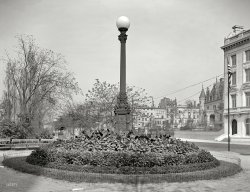
- Society Clowns: 1923
- ... They probably could scare the be-jesus out of little kids,
especially the guy with the wide brimed hat: "mamma I had another ... Posted by Ken - 08/29/2012 - 8:47pm -
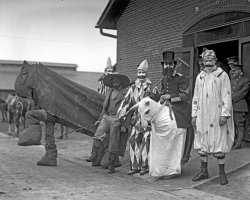
- Trailblazers: 1917
- ... of a SUV!
Honey, slow down I think we've lost the kids.
(The Gallery, Cars, Trucks, Buses, San Francisco, W. Stanley) ... Posted by Dave - 10/31/2014 - 1:10pm -
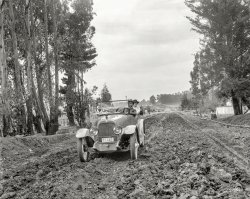
- Sugar and Spice: 1943
- ... pseudo-cookies" were considered off limits to all, but we kids. One may imagine her popularity in our neighborhood.
And then there ... Posted by Dave - 03/11/2014 - 2:10pm -
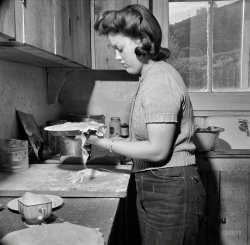
- Fountain of Youths: 1942
- ... anything from the kid who drank before you. Us bigger kids would lift up the smaller ones so they could drink; scraping your knees on ... Posted by Dave - 05/22/2013 - 8:02pm -
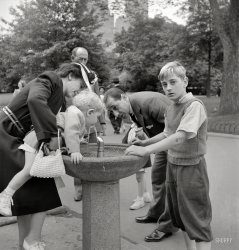
- Funny Hats: 1956
- ... View full size.
(ShorpyBlog, Member Gallery, Kids) ... Posted by k2 - 09/20/2011 - 8:23pm -
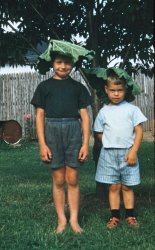
- Mini Me and Dollie: c. 1960
- ... bowl. View full size.
(ShorpyBlog, Member Gallery, Kids) ... Posted by Mudhooks - 08/20/2010 - 10:53pm -

- Les Jeunes Étudiants: 1924
- ... of him looks as though he needs glasses, but none of these kids have them. The girl in the first row closest to us appears to be wearing ... Posted by Dave - 01/08/2013 - 12:13pm -
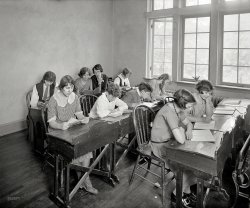
- The Railyard: 1942
- ... on that steel later seem awfully far apart; maybe to keep kids from climbing them when no one is around. I believe that "horseshoe" is a ... Posted by Dave - 01/02/2014 - 8:47pm -
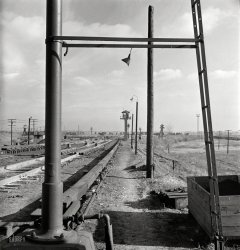
- A Lotta Cotton: 1905
- ... so that I can look at it many times and hope my wife and kids will see it too. Today I left on the picture of this little girl at work ... Posted by Dave - 06/21/2014 - 1:08pm -
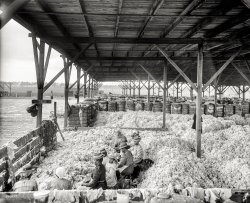
- Washday Alley: 1923
- ... turned away from the activity on the stoop where the kids are having fun. However, the adult on the right side stoop is ready to ... Posted by Dave - 01/17/2015 - 2:08pm -
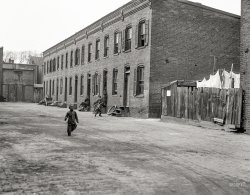
- Chicken Man: 1941
- ... Goober Pea
Nicest turkey When my sister and I were kids (late 50s and early 60s) the day before every Thanksgiving our grandfather ... Posted by Dave - 10/02/2012 - 5:25am -

- Fountain of Youth: 1939
- ... Is it there simply to provide a step up for little kids?
[That was my thought. Or possibly leprechauns. -tterrace]
Not ... Posted by Dave - 01/20/2018 - 12:10am -
![Fountain of Youth: 1939 September 1939. "Public drinking fountain in Grundy Center, Iowa." Photo by Arthur Rothstein for the Farm Security Administration. View full size.
Fountain is gonebut some of the buildings remain.
[There's something under wraps there. And still no U-turn. In 2008 at any rate. -tterrace]
Re: Fountain is goneNow that tterrace has pointed out a mystery object under wraps where the fountain used to be, I am more intrigued by that block of concrete beside the fountain in the original photograph. Is it there simply to provide a step up for little kids?
[That was my thought. Or possibly leprechauns. -tterrace]
Not under wrapsThat is a fountain made of aggregate stone or concrete, not something under wraps. Look at it from this street view angle:
Comfort or cool?Those handlebars seem to be at a ridiculous angle for riding. Maybe that was the "cool" way to have them.
He's A High RiderHandlebars in that position was definitely for the cool factor, Alan_Flor, but safety wise it was so square since higher the handle bar less the steering response.
One had the look of a Harley rider looking for something to rebel against and girls to impress which always overcame stupid safety issues when you are so young and indestructible.
(The Gallery, Arthur Rothstein, Bicycles, Cars, Trucks, Buses, Small Towns)](https://www.shorpy.com/files/images/SHORPY-8b18538a.thumbnail.jpg)
- Florida Ice: 1943
- ... conditioning so quit complaining" stories that we heard as kids in the '60s when the A/C in the house went out.
749 West Ashley ... Posted by Dave - 11/24/2016 - 1:54pm -
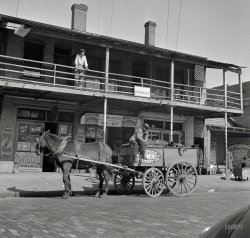
- Hilltop Park: 1912
- ... with the baseball fielders glove preceded the millions of kids that have gone to professional baseball games bringing their mitts in ... Posted by Dave - 09/09/2011 - 7:57pm -
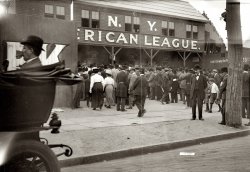
- Redhead Posse: 1956
- ... it great finding traits of both parents in each of the kids? Keep 'em coming, AAAndrew. Unlike the other Kodachromes we've been ... Posted by AAAndrew - 10/03/2014 - 4:52pm -

- Shack Chefs: 1936
- ... on the sinister side, like a gang of spoilers? Or rather kids bored out of their heads and therefore aiming for practical so-called ... Posted by Dave - 03/08/2013 - 6:17pm -
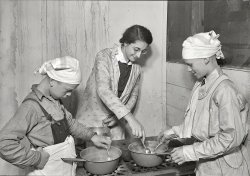
- We Ate the Chickens: 1939
- ...
The Depression. My dad, born 1922, used to tell us kids about the poor family that lived in a palmetto shack near a lake in ... Posted by Dave - 03/27/2018 - 12:13am -
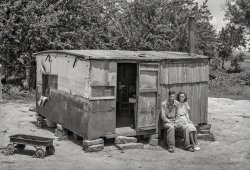
- Blandinsville: 1956
- ... off. View full size.
(ShorpyBlog, Member Gallery, Kids) ... Posted by HankHardisty - 09/19/2011 - 2:15pm -

- Cove Fort, Utah: c.1940
- ... across the street. The woman is my mother, and the two kids have to be me (Douglas) and my sister Barbara. I always wore a hat ... from that early age, although I don't remember any other kids of my age that did. The car in the Cove Fort picture is not one that we ... Posted by bdj100 - 11/07/2014 - 6:52pm -
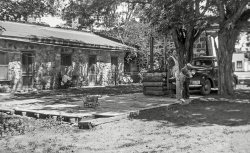
- Boots 'n' Bros: 1948
- ... good to see a happy-looking cat in a pic with two little kids.
Naked ladies My British neighbor has those pink amaryllis in her ... Posted by tterrace - 07/27/2013 - 3:49pm -
![Boots 'n' Bros: 1948 Boots the cat, last seen here, with my brother, age 11 and me, age 2, on our lawn in Larkspur, California. Even if the print hadn't been dated, we'd know it was August because the amaryllis are in bloom; we had them in various places all around our yard. The other horticultural item worth noting is, in the upper right corner, what we'd always called just "the citrus tree" until, twenty years or so later, it finally revealed itself to be a grapefruit. This shot, taken by my sister with her Kodak Duaflex, is on the very first roll of color film we ever used, and the last until my brother started taking color slides seven years later. I restored it from a badly-yellowed print - a fate which befell every Kodacolor print from that period. I still have the negative, but it - as again is typical - has become almost completely dense. View full size.
Lycoris squamigera (resurrection lily)The flower's common name in California is usually "resurrection lily."
The leaves actually appear in the Spring long before the flowers. The leaves die back and the flowers appear late Summer.
[I'm one life-long Northern Californian who never heard them called "resurrection lilies." Occasionally my mother would refer to them jocularly as "naked ladies," which, being an innocent Catholic lad, I thought somewhat naughty. But otherwise they were just amaryllis to us. -tterrace]
Dense?Forgive my ignorance, but what does it mean for a negative to be dense? Is the photo no longer visible? Is it dark? Please elucidate.
[Looks like a piece of brownish-black plastic sheeting to the naked eye. Some image details can brought out in scanning, but not enough to be useful. The result of chemical changes over time in the organic dyes used. -tterrace]
Heart-liftingIt's good to see a happy-looking cat in a pic with two little kids.
Naked ladiesMy British neighbor has those pink amaryllis in her garden and calls them the title of this comment. It is derived from their flowers blooming before their leaves emerge.
Top Cat!!!That sure is one cool cat. Thanks for sharing.
(ShorpyBlog, Member Gallery, tterrapix)](https://www.shorpy.com/files/images/boots_n_bros_0302Adj1.thumbnail.jpg)
- Six in the Park: 1929
- ... replica of the original from the 1915 Exposition.
Us kids, roaming around San Francisco in the early '60s, often played at the old ... Posted by Dave - 02/15/2015 - 9:32pm -
![Six in the Park: 1929 San Francisco, 1929. "Hudson Super Six." Strangers when they met, until he took her for a ride. 5x7 inch glass negative by Christopher Helin. View full size.
A Robust RideHudsons were well constructed and solidly middle-class cars. That sedan probably weighs as much as four of today's Formula 1 racers and thanks to its torque-rich, long stroke engine, could probably accelerate smoothly from a walking pace to 45 MPH in ... oh, I don't know -- how much time have you got?
[Curb weight of this five-passenger sedan was about 3,700 pounds, or two and a half Formula 1 cars. -Dave]
The Joads' JalopyIt was a Hudson Super Six that starred as the Joads' decrepit jalopy in John Steinbeck's signature 1939 novel, "The Grapes of Wrath." After ten appalling years of the Great Depression, it must have been hard to know which were more worn out: 1920s autos or the hapless Americans who were still driving them.
Palace of Fine ArtsPart of the 1915 Panama-Pacific International Exposition, sort of a world's fair for the City, the only remaining buildings. Lovely part of the City!
A la modeI am very interested in menswear, especially business wear, and it is fascinating to me how contemporary the fellow in this photo looks. The cut of the suit, the shoes, the haircut - all could as easily be 2015, even though this picture is 86 years old. You can place the woman and the car in period, but not him.
Today's Palace of Fine ArtsMany San Franciscans would be surprised to learn that the beautiful and iconic Palace of Fine Arts in the City's Marina District is actually a 1965 replica of the original from the 1915 Exposition.
Us kids, roaming around San Francisco in the early '60s, often played at the old Palace. It was in terrible shape, actually rotting away with the poor quality burlap and plaster finish falling off the wood lath beneath. It had never been intended to last longer than the expo and wasn't permanent.
Fortunately, San Francisco couldn't let it go and so they completely rebuilt the Palace on site in permanent materials.
Here's a photo by Kevin Cole:
(The Gallery, Cars, Trucks, Buses, Chris Helin, San Francisco)](https://www.shorpy.com/files/images/SHORPY-252-02A.thumbnail.jpg)
- Sliding Home: 1955
- ... very long.
Definitely buggered For reasons only kids could know, my sister and I, she aged three and I two, decided these Fords ... Posted by Dave - 02/18/2016 - 9:19pm -
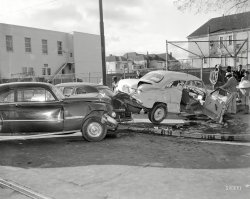
- Joe & Rich: 42 Years Later
- ... us have been married for almost 40 years. We each have two kids, and except for a short time in the 1980s, we have lived within two hours ... Posted by joemanning - 07/12/2008 - 1:18pm -
- Transplant: 1939
- ... can be. Hope his life was a full one with lots of grand kids and happy memories.
(The Gallery, Agriculture, Dorothea Lange) ... Posted by Dave - 03/16/2013 - 11:31am -
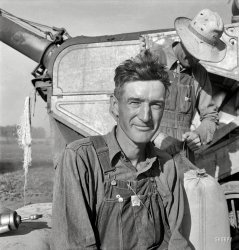
- The Road to Mecca: 1923
- ... survive, the country was in decent shape economically, and kids' sporting events, dance recitals and all of the other stuff that occupies ... Posted by Dave - 09/12/2011 - 12:09pm -
![The Road to Mecca: 1923 "Almas director." Officials of Almas, the Washington D.C., Masonic temple, at the Shriners Convention of June 1923, which hosted a quarter-million delegates from lodges and temples across the United States. Imperial Potentate James McCandless and President Warren Harding, himself a Master Mason, were among the dignitaries present for a week of parades along Pennsylvania Avenue, which was strung with thousands of electric lights and rechristened the "Road to Mecca" at a time when interest in fraternal organizations was at its peak. View full size.
Hats off to ya...This image may be indicative of an era when people had a lot more free time on their hands.
Counting ShrinersAs a Shriner I have often heard of our membership number woes. The peak of membership, if I recall correctly, was actually after WWII, but in the 1960s the decline began with the deaths of men in their 60s and 70s. The current concern about membership is rooted in our support of the 22 Shriners Hospitals for Children, which provide orthopedic and burn care absolutely free of charge. Each year we have fewer men to assist in the fund raising efforts.
Also, I doubt 250,000 delegates showed up for the convention; that was probably the number of Shriners nationwide in 1923.
[Masonic membership at its peak in the United States was around 4 million. The population of Washington was expected to grow from 437,000 to over 700,000 during the week of the Shrine convention in June 1923, according to the New York Times. The Washington Post put the number of guests at 500,000. - Dave]
Dave, I raise my fez to salute your always excellent research abilities. - DoninVa
Friday: With my fez still in the air, after a night's sleep I realize we are talking apples and oranges. While all Shriners are Masons, not all Masons are Shriners. I was considering Shrine membership, not Lodge membership; by 1930 there were 600,000 Shriners.
MasonsTrue. They had just reached the point where you didn't need to work 18 hours a day just to survive, the country was in decent shape economically, and kids' sporting events, dance recitals and all of the other stuff that occupies people's lives had not yet been invented.
However, back then, you had to seek activities for your leisure. Today a lot of folks turn on the TV and crack a cold one because leisure is handed to us via satellite. That is definitely a factor in Masonic as well as other existing fraternal organizations decline in numbers. The old-timers die off, younger folks have other outlets.
Fraternal OrganizationsHats Off you are right about more free time for many people. The Lodge Hall was a more respectable place than a local tavern, especially during Prohibition. The camaraderie was another factor and there were some good works involved. I think it started to unravel after WWII.
Harding the MasonThe Harding biography "The Shadow of Blooming Grove" covers the subject of W.G.'s masonic aspirations in great detail. He was actually denied entry into the masonic order until later in his life, after his first term as a congressman, due to the rumors around Ohio that he was of Negro ancestry, an accusation used by Harding's enemies in those race-conscious times. As his prestige rose and he entered the Senate he basically forced his way into the order and was shuffled quickly through its ranks to the highest levels.
(The Gallery, D.C., Natl Photo)](https://www.shorpy.com/files/images/08830u.thumbnail.jpg)
- Cold Wheels: 1947
- ... my neighborhood plays Beethoven's Für Elise to tempt the kids.
No Bell The ice cream guy in my neighborhood in the 50's and ... Posted by Dave - 04/20/2018 - 6:57pm -
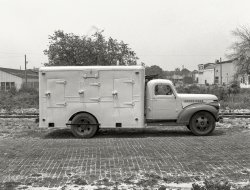
- Wash Ave: 1905
- ...
In today's world, one would never think of letting kids out alone at that young of an age. Back then, everyone was your parent, ... Posted by Dave - 05/10/2011 - 1:29pm -

- The Newlyweds - Their Baby: 1910
- ... asks, that still leaves it years behind "The Katzenjammer Kids" in terms of longevity - that strip began in December 1897 and continues ... Posted by Ken - 07/26/2007 - 5:36pm -

- Handy Helpers: 1942
- ... OTY describes with tin cans, and the neighborhood "big kids" of five or six collecting them door-to-door with their Radio Flyers. ... Posted by Dave - 03/02/2015 - 9:22am -
